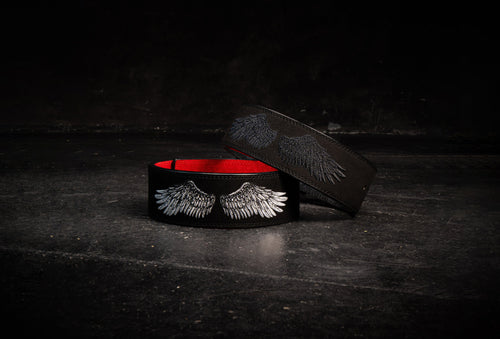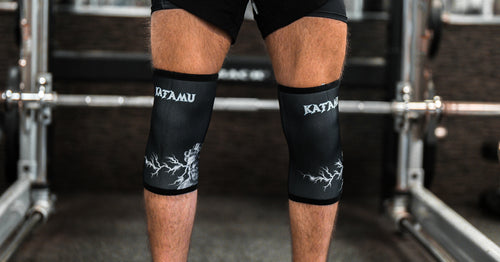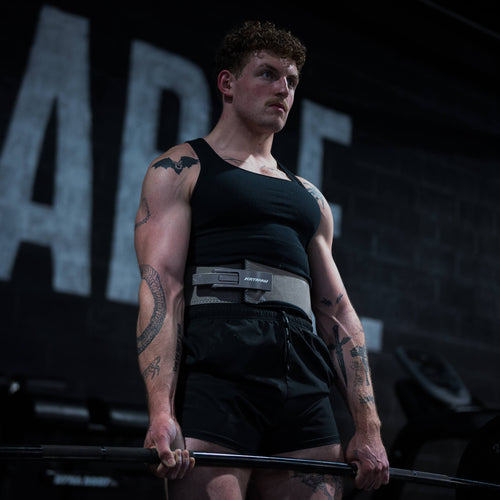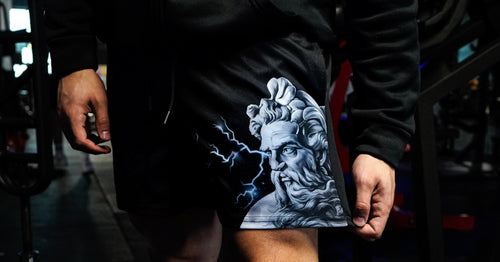Looking to build powerful legs without straining your back? The belt squat belt might be your game-changer in 2025. More athletes and gym enthusiasts are turning to this tool for joint-friendly and spine-safe lower body training.
With the right belt squat belt, you can maximize your results while boosting comfort and safety. No matter your experience level, choosing the right gear makes a big difference.
Ready to take your training to the next level? This guide will show you what a belt squat belt is, how to choose the best one for your goals, and how to use it for optimal strength gains. We’ll walk through belt basics, key selection tips, standout features, step-by-step usage, maintenance advice, and expert FAQs.
What is a Belt Squat Belt?
Looking to train your lower body without putting unnecessary pressure on your spine? The belt squat belt is designed specifically for this purpose. Unlike a traditional lifting belt, a belt squat belt lets you load weight around your hips instead of on your back or shoulders. This setup shifts the resistance directly to your legs, minimizing strain on your lower back.
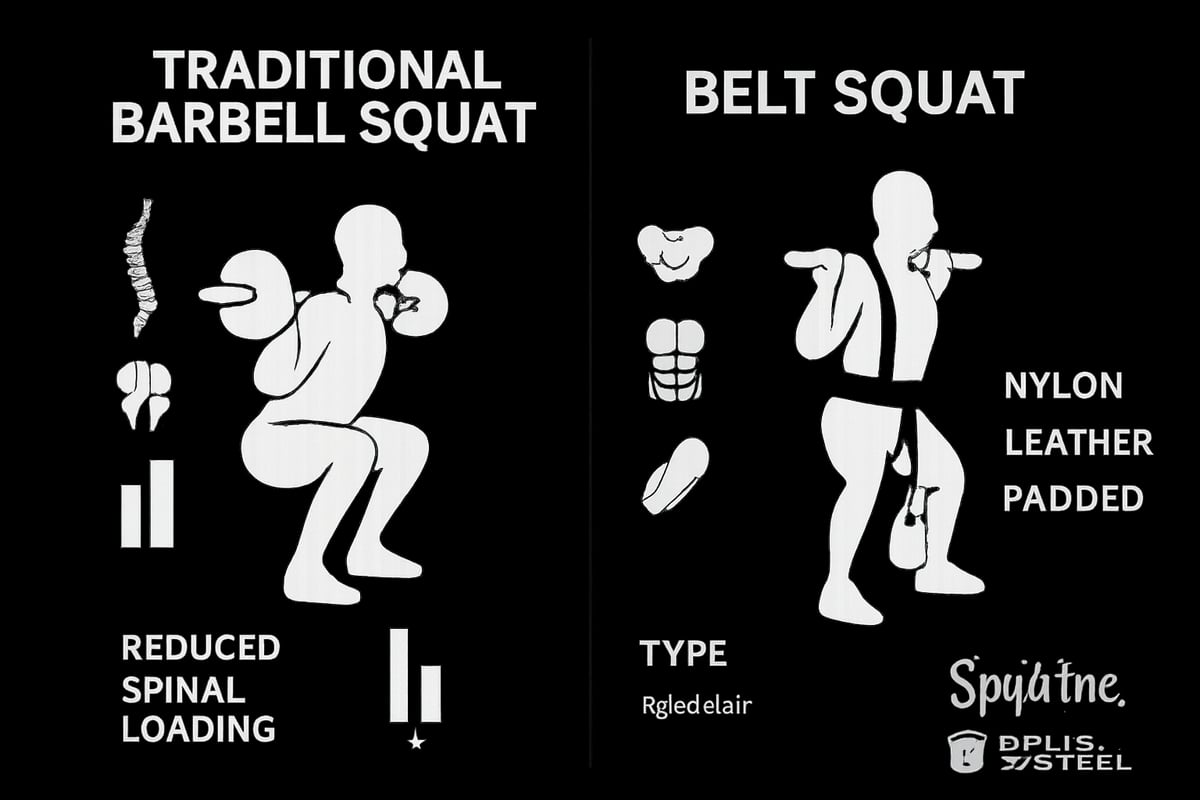
Definition and Purpose
A belt squat belt is a specialized piece of gym equipment used to perform belt squats and other weighted lower body movements. Its main function is to distribute the load through your hips, bypassing the spine and allowing lifters to train their legs safely and efficiently.
When performing a belt squat, the weight is attached to the belt squat belt, which rests securely around your hips. This method contrasts with the traditional back squat, where the barbell sits across your upper back and shoulders. Because the belt squat belt keeps the load off your spine, it is especially popular with athletes recovering from back injuries or those who want to reduce spinal compression.
The benefits of using a belt squat belt go beyond spine safety. It enables targeted leg training, allowing you to deeply engage your quads, glutes, and hamstrings. Many physical therapists recommend the belt squat belt for rehabilitation, as it can help rebuild strength without aggravating back issues.
Brands like Spud Inc and Bells of Steel have become household names in this space, offering durable, high-capacity options for both home and commercial gyms. These belts are engineered to handle heavy weights, making them ideal for serious lifters and beginners alike.
If you are curious about the pros and cons of using different lifting belts, this Review of lifting belt usage covers their benefits and potential drawbacks, helping you make an informed decision.
The key takeaway: a belt squat belt allows for heavy, effective leg workouts with less risk to your lower back, making it a smart choice for anyone prioritizing safety and performance.
Types of Belt Squat Belts
There are several types of belt squat belts on the market, each designed for specific preferences and training needs. The most common materials include nylon and leather, with some belts featuring extra padding for comfort.
Nylon belt squat belts, like those from Spud Inc, are lightweight, flexible, and known for their durability. These belts often use reinforced stitching and wide profiles to distribute weight evenly. Leather models, on the other hand, provide a more rigid feel and are favored by those who prefer traditional lifting gear.
Attachment systems also vary. Some belt squat belts use heavy-duty chains, while others opt for wide straps or carabiners. Chains offer excellent load stability and are compatible with most weight plates, while straps can be quieter and easier to adjust. The choice between chain and strap often comes down to personal preference and the specific exercises you plan to do.
Padded versions of the belt squat belt are gaining popularity, especially for lifters who train with high volumes or heavy weights. Padding helps prevent hip bruising and adds comfort during extended sessions.
When comparing belt squat belts, consider the width, padding, and attachment points. Wider belts tend to be more comfortable and offer better support, while multiple attachment points increase versatility for exercises like dips, sled drags, and pull-ups.
Here's a quick comparison table:
| Type | Material | Attachment | Pros | Cons |
|---|---|---|---|---|
| Nylon | Synthetic | Chain/Strap | Light, flexible, durable | Less rigid |
| Leather | Animal | Chain | Traditional, sturdy | Can be less comfortable |
| Padded | Varies | Chain/Strap | Extra comfort | Slightly bulkier |
In 2025, the demand for comfort and versatility in belt squat belt design is higher than ever. Many athletes now look for a belt that can handle multiple exercises and adapt to different gym setups. Whether you prioritize material, attachment style, or padding, there is a belt squat belt tailored to your goals.
Key Features to Consider When Choosing a Belt Squat Belt
When shopping for the best belt squat belt, understanding which features matter most can make all the difference. Let's break down the essentials so you can buy with confidence and train with peace of mind.
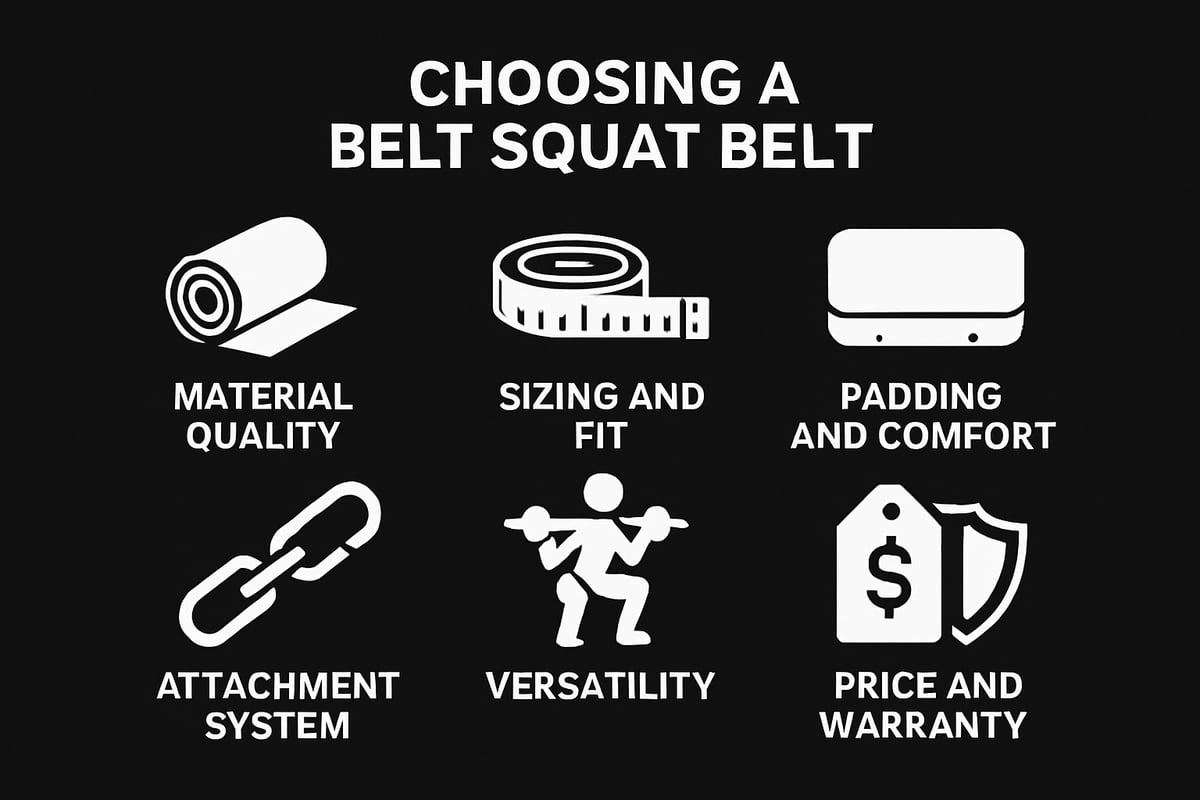
Material Quality and Durability
The material of your belt squat belt is the backbone of its performance and longevity. Top models use heavy-duty nylon or thick leather, with reinforced stitching to withstand repeated heavy loads.
A durable belt squat belt resists fraying and stretching, even under intense use. Brands like Spud Inc are praised for their tough American-made nylon, which holds up over years of squats and drags.
High-quality materials also improve comfort and safety, reducing the risk of tearing or failure during a lift. Most leading belts are rated to support over 700 pounds, so you can push your limits without worry.
Sizing and Fit
Getting the right fit is crucial for any belt squat belt. Measure your waist and hips where the belt will sit, then compare with the sizing chart provided by the manufacturer.
Many brands offer small, medium, and large sizes to accommodate everyone from youth athletes to powerlifters. A snug fit means better support and less shifting during movement, while a poor fit can cause discomfort or even injury.
For more details on finding your ideal size, check out this Weightlifting belt sizing guide. Remember, the right fit enhances both performance and safety.
Padding and Comfort
Padding can make or break your belt squat belt experience. Well-padded belts help prevent bruising and discomfort around the hips, especially during high-volume or heavy sessions.
User reviews often highlight the preference for wider belts with thick, dense padding. Minimal padding might work for lighter training, but most lifters benefit from extra cushioning for challenging sets.
Choosing a comfortable belt squat belt means you can focus on form and strength, not irritation or pain.
Attachment System: Chains, Hooks, and Carabiners
The attachment system determines how your belt squat belt connects to weights or machines. Common options include chains, straps, carabiners, and slip hooks.
Here's a quick comparison:
| Attachment Type | Pros | Cons |
|---|---|---|
| Chain | Stable, versatile | Can pinch or tangle |
| Strap | Lightweight, quiet | May wear faster |
| Carabiner | Easy to swap weights | Needs secure closure |
For example, Spud Inc offers both chain and carabiner setups, letting you pick what suits your training style.
Versatility and Exercise Applications
A versatile belt squat belt is a smart investment for any gym. The best models are designed for more than just squats, allowing you to tackle dips, sled drags, pull-ups, and more.
Multipurpose belts mean you can switch up your routine without extra gear. Many athletes mention using their belt squat belt for multiple exercises, making it ideal for both home and commercial gyms.
If you train across different disciplines, choose a belt that adapts to your evolving needs.
Price and Warranty
Price varies depending on features, materials, and included accessories. Expect to pay between $60 and $110 for a quality belt squat belt. Some come with a chain or hook, while others sell attachments separately.
A good warranty is another sign of value. Look for satisfaction guarantees or coverage against defects. Weigh the cost against durability and versatility to ensure you get the best return on your investment.
A wise purchase now means years of safe, effective lower body training.
Step-by-Step Guide: How to Use a Belt Squat Belt Safely in 2025
Looking to get the most out of your belt squat belt? Follow this step-by-step guide to ensure safe, effective, and comfortable workouts in 2025. Whether you’re new to the belt squat belt or looking to refine your technique, these tips will help you maximize your strength gains and minimize risk.
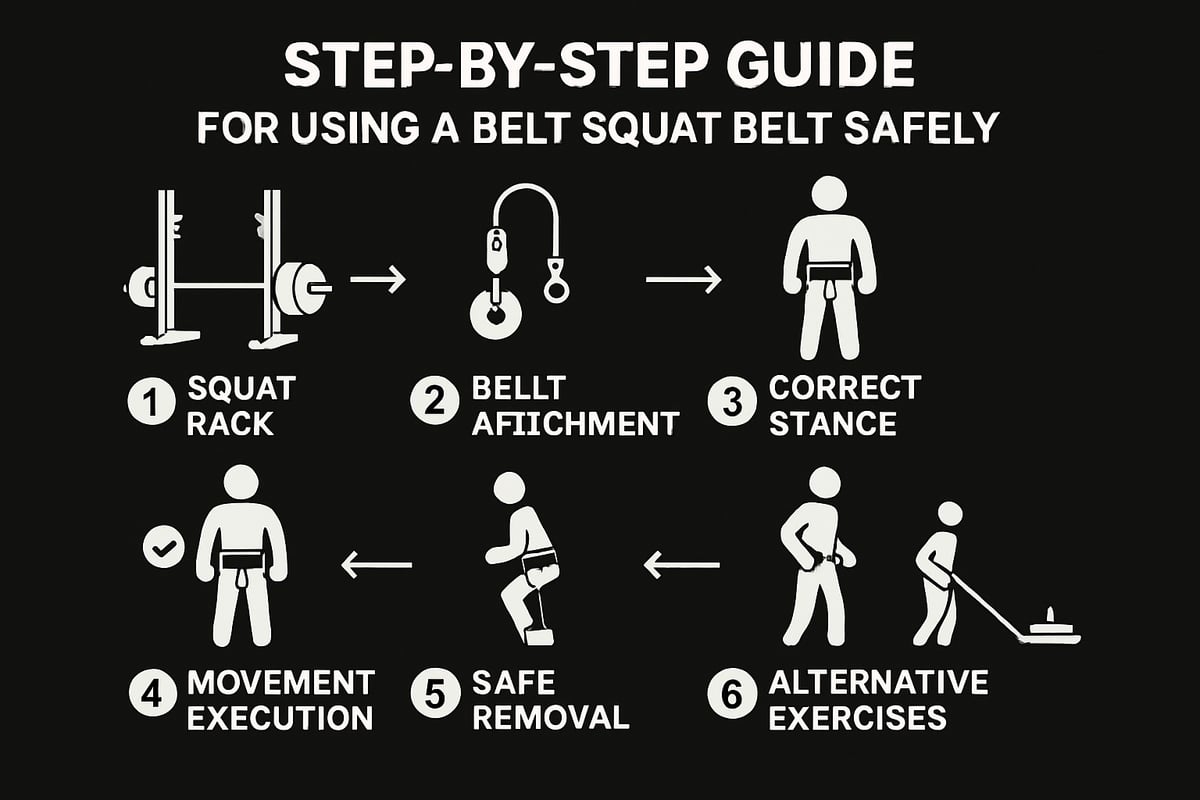
Step 1: Setting Up Your Equipment
Begin by selecting the right loading method for your belt squat belt. You can use a dedicated belt squat machine, free weights like plates or kettlebells, or even dumbbells. Each setup offers unique benefits. Machines ensure stability, while free weights provide flexibility for home gyms.
Before you start, double-check that your belt squat belt is compatible with your chosen setup. Inspect the belt, chain or strap, and all anchor points for any signs of wear. This quick check helps prevent equipment failure during heavy lifts.
- Always verify that the belt squat belt is free of fraying or loose stitching.
- Ensure the attachment system can handle your intended weight.
- Confirm that the loading pin or anchor is secure and stable.
Proper setup is the foundation for a safe and productive belt squat session. Take a moment to prepare your space and equipment before moving on.
Step 2: Attaching the Belt and Weights
Once your equipment is set, it’s time to secure your belt squat belt. Wrap the belt snugly around your hips, not your waist, to ensure the load is distributed through your lower body. Fasten it firmly but comfortably, avoiding overtightening.
Attach the chain or strap to your weights or machine. Make sure the connection is solid, using carabiners for quick changes and added safety. Adjust the chain or strap length so the weights hang just above the floor when you’re standing upright.
- Double-check that the carabiner or hook is fully closed.
- Test the setup with a light load before adding more weight.
- Ensure there’s enough slack for a full range of motion, but not so much that the weights drag.
This step sets the stage for effective squats and minimizes the risk of equipment failure.
Step 3: Positioning for the Belt Squat
Proper positioning is key for making the most of your belt squat belt. Stand with your feet about shoulder-width apart, toes slightly turned out. The belt should sit low on your hips, with the load centered between your legs.
Keep your chest tall, core braced, and eyes forward. Avoid leaning forward or rounding your back. This posture ensures that your legs, not your spine, do the work.
- Engage your glutes and quads before starting the movement.
- Maintain even weight on both feet.
- Check that the weights move freely, without swinging or catching.
Correct positioning helps target your lower body and protects your back. Take a moment to adjust your stance before beginning each set.
Step 4: Executing the Movement
Now, it’s time to squat. Initiate the movement by bending at the hips and knees, keeping your chest up and your back neutral. Lower yourself until your thighs are parallel to the ground or slightly below, depending on your mobility.
Push through your heels to return to standing. Focus on a controlled tempo, both lowering and rising. Breathe in as you descend and exhale as you push up. Bracing your core throughout the movement helps maintain stability and safety.
Progressive overload is crucial for strength gains. Gradually increase the weight or reps over time, making sure your belt squat belt remains secure. For a deeper dive into how muscle activation varies across different squat techniques, check out this comparison of muscle activation in hip belt squat techniques.
Perfecting your technique will help you build powerful legs while minimizing injury risk.
Step 5: Unloading and Removing the Belt
After finishing your set, stand upright and carefully detach the weights. If using a chain, unclip the carabiner or hook before loosening your belt squat belt. Always make sure the weights are stable before removing the belt.
- Avoid dropping the weights to prevent damage.
- Unfasten the belt squat belt gently to prolong its lifespan.
- Store the belt and attachments in a dry, safe place after use.
Take a few moments to stretch your hips and legs post-set. This aids recovery and prepares you for your next session.
Additional Applications: Beyond the Belt Squat
The belt squat belt isn’t limited to squats. Its design allows for a variety of strength exercises, making it a versatile addition to any gym routine. Try weighted dips by attaching the belt squat belt to a dip belt station, or use it for pull-ups to add resistance.
Sled drags are another popular option. Secure your belt squat belt to a sled for explosive lower-body training. Some athletes even use the belt for hip belt marches or calf raises.
- Weighted dips for chest and triceps
- Pull-ups with added resistance
- Sled drags for explosive power
- Creative exercises for functional strength
Experiment with different movements to get the most out of your belt squat belt. Its versatility can help you break plateaus and enhance your training variety.
Top Belt Squat Belt Brands and Models in 2025
Choosing the right belt squat belt can make all the difference for your training in 2025. With so many options on the market, it is essential to compare top brands for durability, comfort, and performance. Let us break down the leading models so you can find the best fit for your goals.
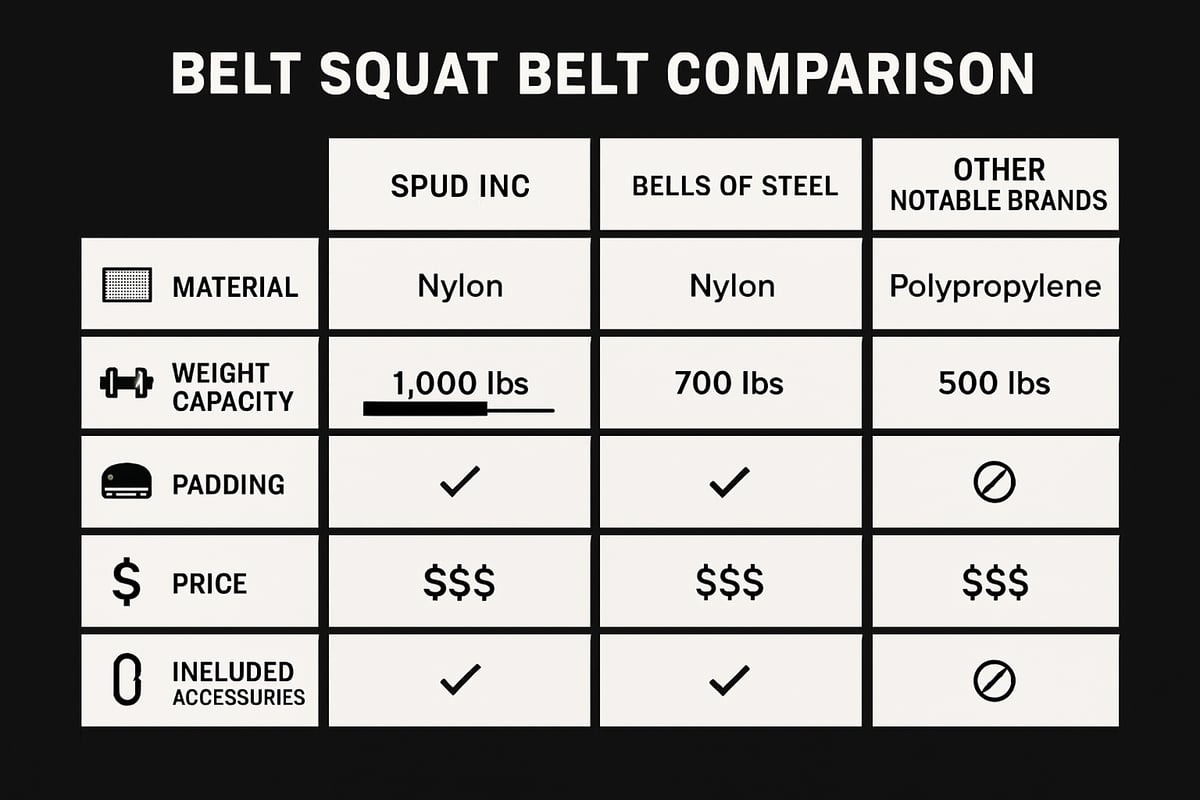
Spud Inc Belt Squat Belt
Spud Inc remains a top choice among serious lifters for its rugged construction and versatility. This belt squat belt is crafted from heavy-duty woven nylon, known for its unmatched durability and flexibility. The American-made quality is evident in every detail, from reinforced stitching to robust hardware.
- Material: Durable woven nylon
- Weight capacity: Supports heavy loads, ideal for advanced lifters
- Sizes: Youth, small, regular, and extra-large
- Attachments: Comes with a chain and hook for secure weight loading
- Origin: Made in the USA
Users consistently praise the Spud Inc belt squat belt for its comfort and adaptability. The wide, padded design distributes weight evenly, reducing pressure on the hips even during high-volume sessions. Multiple size options ensure a snug fit for all body types. At a mid-range price point, this belt offers exceptional value for those seeking long-term reliability.
Bells of Steel Belt Squat Belt
The Bells of Steel belt squat belt has quickly gained popularity for its blend of comfort, strength, and affordability. With a maximum load capacity of 700 pounds, it is built to handle serious training. Reinforced stitching and thick padding set this model apart, making it a go-to for both home and commercial gyms.
- Material: Heavy-duty nylon with comfortable padding
- Weight capacity: Up to 700 lbs
- Accessories: Includes a sturdy chain and carabiners for versatile setup
- Price: Competitive at $62.99
- User reviews: High marks for comfort and multi-exercise functionality
Lifters love the Bells of Steel belt squat belt for its user-friendly design and robust performance. The extra padding prevents hip bruising, especially during heavy squats or sled drags. With its reliable build and attractive price, this model is perfect for athletes wanting pro-level features without breaking the bank.
Other Notable Brands
While Spud Inc and Bells of Steel lead the pack, several other reputable brands offer quality belt squat belt options. When comparing models, look for features like reinforced stitching, quality materials, and thoughtful design. Some belts use leather for a traditional feel, while others favor nylon for flexibility and lighter weight.
Here is a quick comparison of Spud Inc and Bells of Steel:
| Feature | Spud Inc | Bells of Steel |
|---|---|---|
| Material | Woven nylon | Heavy-duty nylon |
| Max Capacity | Heavy loads | 700 lbs |
| Padding | Wide, padded | Thick, comfortable |
| Accessories | Chain, hook | Chain, carabiners |
| Price Range | Mid-range | $62.99 |
| Origin | USA | International |
Tips for choosing your belt squat belt:
- Prioritize comfort and fit over brand name.
- Check for a secure attachment system that matches your training style.
- Read user feedback for real-world durability insights.
- Avoid generic or no-name belts with questionable stitching or hardware.
If you need expert guidance for your specific training needs, you can always contact for belt recommendations and get personalized advice before making your final decision.
No matter which belt squat belt you choose, investing in a high-quality model is the key to safe, effective lower body training in 2025.
Maintenance and Care Tips for Belt Squat Belts
Keeping your belt squat belt in top condition is essential for safety, performance, and longevity. A well-maintained belt squat belt will support heavy training sessions and provide consistent comfort. Let’s break down the best ways to clean, inspect, and care for your belt squat belt so it lasts for years.
Cleaning and Storage
Regular cleaning is crucial for preserving your belt squat belt. For nylon models, wipe down with a damp cloth and mild soap after heavy use. Leather belts require a gentle leather cleaner and soft cloth to avoid drying or cracking.
Clean your belt squat belt every few weeks if you train often, or after any sweaty session. Always air dry completely before storing. Avoid tossing your belt squat belt in a gym bag while damp, as this can lead to mildew or odor.
Proper storage matters too. Hang your belt squat belt on a sturdy hook or lay it flat in a cool, dry area. Avoid folding it sharply or storing under heavy objects, which can deform its shape over time.
Inspecting for Wear and Tear
Inspect your belt squat belt regularly to ensure it remains safe for heavy lifting. Check all stitching for fraying or loose threads, especially where the belt connects to chains or straps. Examine chains, carabiners, and hardware for signs of rust or damage.
A quick inspection checklist:
- Look for worn spots or tears in the belt material.
- Test the strength of attachment points and buckles.
- Check for unusual stretching or loss of padding.
If you notice any issues, consider replacing your belt squat belt before your next session. Many users report that top brands last for years, but even the best gear will show signs of wear eventually. Don’t risk your safety with a damaged belt squat belt.
Extending Belt Lifespan
To get the most out of your belt squat belt, protect it from excessive moisture, sunlight, and abrasion. Store away from direct sunlight to prevent fading or material breakdown. Avoid exposing your belt squat belt to harsh chemicals or rough surfaces.
If you train in a commercial gym, consider rotating between belts to minimize wear. Always follow the manufacturer’s care instructions for your specific belt squat belt. Brands that prioritize quality, like those highlighted in our mission on gym gear quality, offer guidance to help you maximize your investment.
With a little attention, your belt squat belt will remain a dependable training partner for years.
Frequently Asked Questions About Belt Squat Belts
Curious about the belt squat belt and how it fits into your training routine? Check out these expert answers to the most common questions lifters ask in 2025.
Are belt squat belts safe for people with back pain?
Yes, a belt squat belt is widely recommended for those with back issues because it shifts the load to your hips instead of your spine. This reduces spinal compression, making heavy leg training much safer for people with previous injuries. Studies have shown that using a weight belt during squats can help manage intra-abdominal pressure and muscle activation, which may support joint health. For more details, see this study on the effectiveness of weight-belts during squat exercise.
What exercises can I do with a belt squat belt besides squats?
A belt squat belt is incredibly versatile. Besides squats, you can use it for:
- Weighted dips
- Pull-ups
- Sled drags
- Hip belt marches
- Belted lunges
This flexibility makes it a favorite among athletes who want to target their lower body and upper body without extra equipment.
How much weight can a typical belt squat belt hold?
Most high-quality belt squat belt models, like those from Bells of Steel, can support up to 700 lbs. This capacity is more than enough for advanced lifters and ensures safety during heavy training sessions. Always check the manufacturer’s specs to confirm load ratings.
Is a belt squat belt better than a dip belt?
While both serve similar purposes, a belt squat belt is designed for greater comfort and heavier loads. Here’s a quick comparison:
| Feature | Belt Squat Belt | Dip Belt |
|---|---|---|
| Max Load | Up to 700 lbs | 300-400 lbs |
| Padding | Thick, padded | Minimal |
| Comfort | High | Moderate |
| Versatility | Very high | Moderate |
User reviews consistently mention the belt squat belt as the better choice for lower body work and anyone seeking spine-friendly training.
How do I know if my gym’s belt squat belt fits me?
To ensure a good fit, measure your waist and hips, then check the sizing guide provided by brands like Spud Inc or Bells of Steel. A properly fitted belt squat belt should sit snugly on your hips without pinching or slipping during movement.
Can I use a belt squat belt with home gym equipment?
Absolutely. The belt squat belt is compatible with most home gym setups, including power racks, loading pins, kettlebells, and sleds. Its adaptability is one reason it’s so popular for home and garage gyms.
How often should I replace my belt squat belt?
Inspect your belt squat belt regularly for signs of wear, such as frayed stitching, damaged chains, or worn hardware. Most quality belts last years with proper care, but if you notice structural damage or reduced support, it’s time to replace it for safety.
Now that you know how a belt squat belt can help you build serious strength while keeping your back safe, it’s the perfect time to take your training up a notch. Whether you're new to belt squats or looking to upgrade your gear for 2025, choosing high quality equipment makes all the difference in comfort, results, and longevity. At Katamu, we’ve got premium lifting belts and accessories that are built to last and look great, so you can focus on crushing your goals. Ready to get started? Build your setup and see the difference for yourself.
